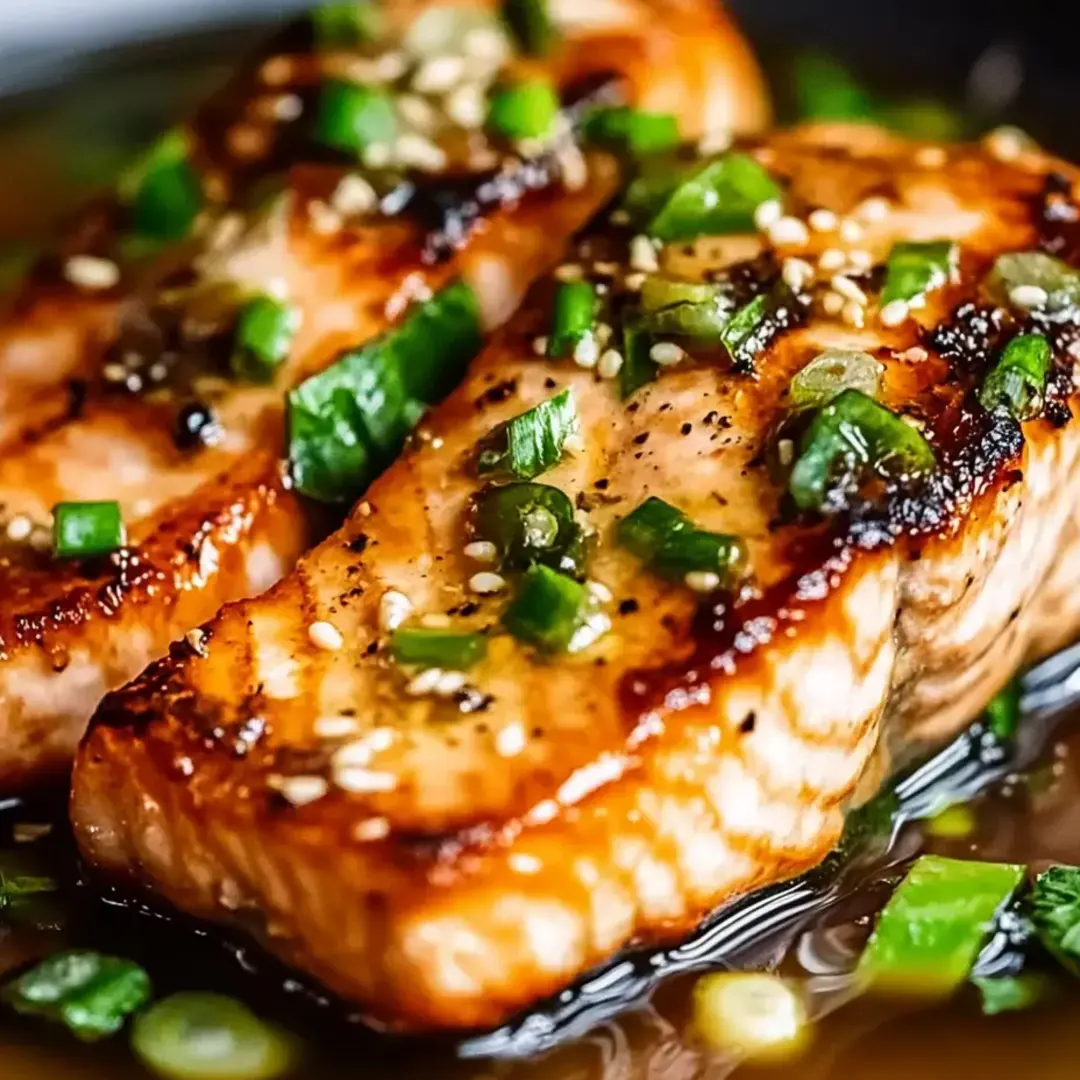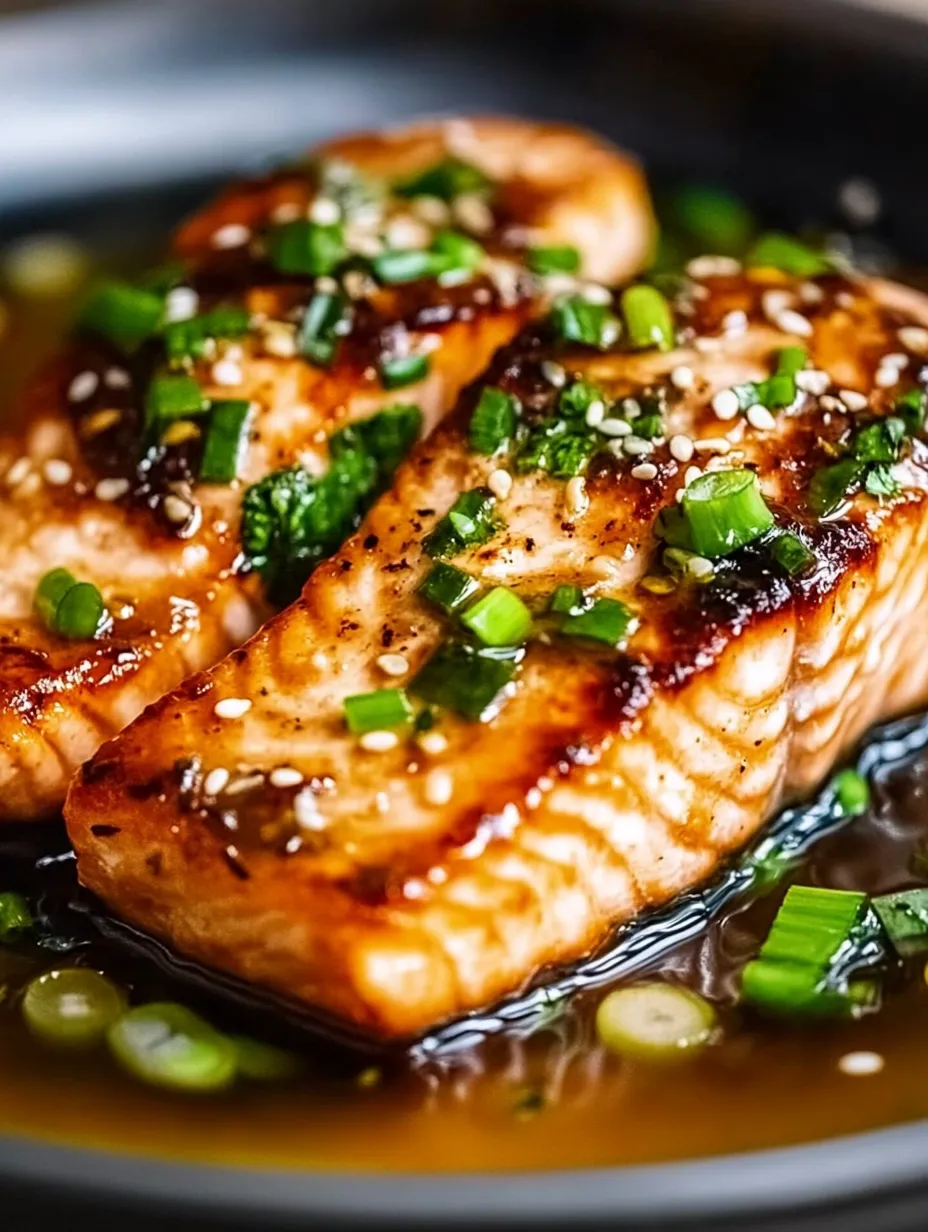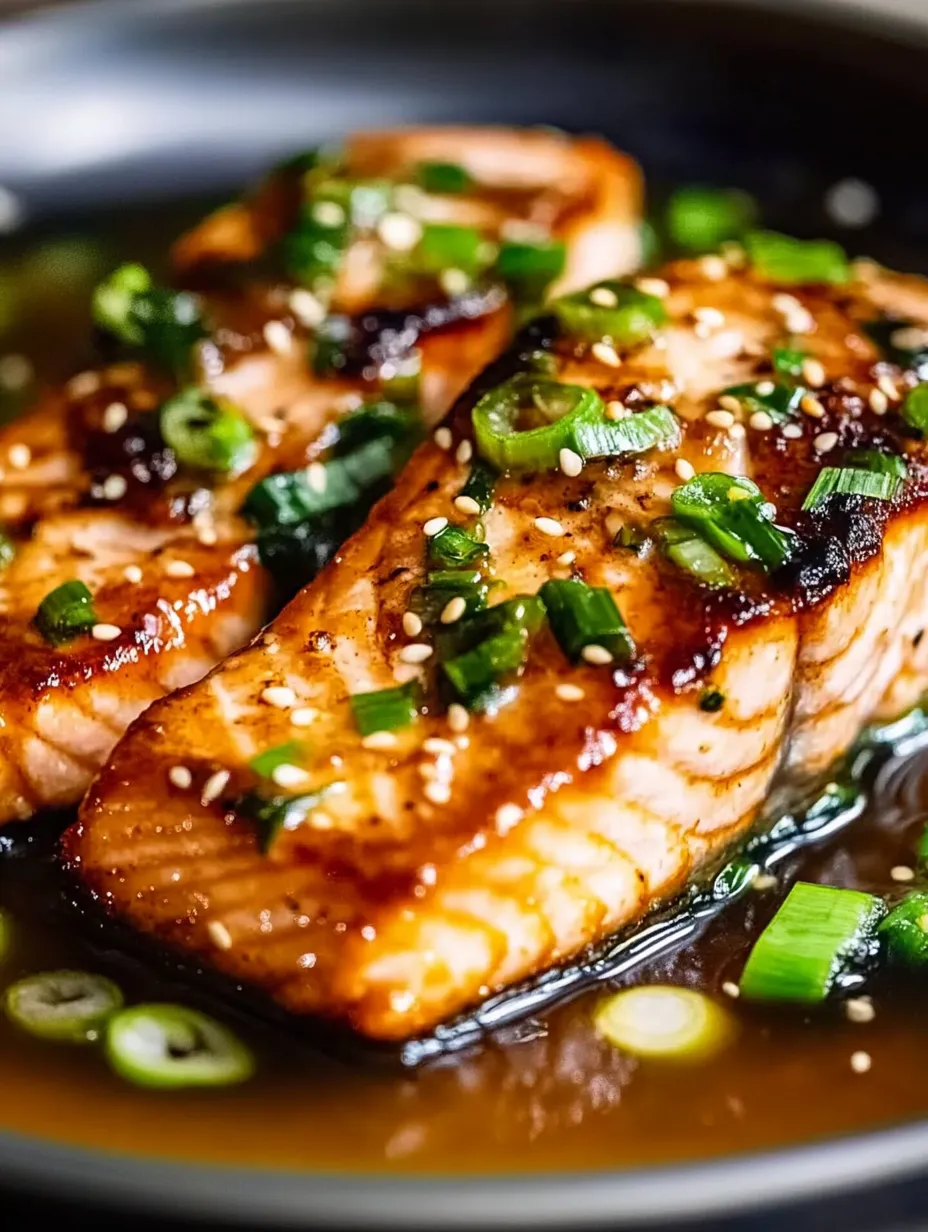 Pin it
Pin it
Miso Butter Salmon transforms an ordinary fish dinner into a culinary masterpiece with minimal effort. The magic happens when the rich, savory miso paste mingles with creamy butter to create a glaze that caramelizes beautifully on the salmon. Each bite delivers that perfect balance of umami depth and buttery richness, while the salmon remains tender and flaky. The glaze develops an irresistible golden crust that seals in the moisture, ensuring the fish stays succulent from the first bite to the last.
I first made this recipe last summer when my sister visited from Chicago. She's notoriously picky about seafood but ended up asking for seconds and then demanded the recipe before leaving. Now it's become our special tradition whenever she visits, and I've started experimenting with different side dishes to complement the rich flavors.
Ingredients
- Salmon fillets: Select pieces with bright color and firm texture. Wild-caught offers the best flavor, but good quality farmed salmon works beautifully too. The fat content in salmon stands up perfectly to the rich glaze without becoming overwhelmed.
- Butter: Use unsalted butter to control the sodium level since miso and soy sauce already bring saltiness. European-style butter with higher fat content creates an even more luxurious sauce if you have it available.
- White miso paste: This fermented soybean paste is the star ingredient that delivers complex umami flavor without overpowering the salmon. White miso offers a milder, slightly sweet profile compared to darker varieties, making it perfect for this dish.
- Soy sauce: Adds depth and saltiness that enhances the miso. Use low-sodium if you're watching salt intake - the flavor won't suffer.
- Honey: Provides just enough sweetness to balance the savory elements and helps create that beautiful caramelization on the salmon. Local honey adds subtle flavor nuances that make the dish even more special.
- Fresh garlic: Always use fresh rather than pre-minced for the brightest flavor. When minced finely or grated on a microplane, it virtually melts into the sauce, infusing every bite without overwhelming.
- Rice vinegar: This mild, slightly sweet vinegar adds the perfect touch of acidity to cut through the richness of the butter and salmon. Don't substitute with stronger vinegars like white vinegar, which would throw off the balance.
- Sesame oil: Just a small amount adds remarkable depth and nutty complexity that ties the Asian flavors together beautifully. It's technically optional but makes a noticeable difference in the final dish.
- Olive oil: Used for the initial searing of the salmon. Choose a variety with a mild flavor and high smoke point rather than an expensive extra virgin that would lose its nuance during cooking.
- Salt and pepper: Simple seasonings that build the foundation for the more complex flavors to come. Use kosher salt for better control and freshly cracked black pepper for the best flavor.
 Pin it
Pin it
Step-by-Step Instructions
- Step 1:
- Prepare your workspace mindfully - Before you begin cooking, gather all ingredients and measure them out. This simple preparation step makes the cooking process flow smoothly and ensures nothing is forgotten. Place your miso paste, butter, soy sauce, honey, minced garlic, rice vinegar, and sesame oil near the stove for easy access. Having everything within reach transforms the cooking experience from stressful to enjoyable, especially when working with a protein like salmon that cooks quickly and requires attention.
- Step 2:
- Create the miso butter glaze with care - Start by melting the butter in a small saucepan over medium heat, watching carefully so it doesn't brown. Once completely melted, whisk in the white miso paste until no lumps remain – this might take a minute as miso can be quite thick. The mixture will look slightly grainy at first but will smooth out as you continue whisking. Next, add the soy sauce, honey, minced garlic, rice vinegar, and sesame oil, stirring constantly to incorporate. Let this mixture simmer gently for 2-3 minutes, stirring occasionally, until it thickens slightly and becomes glossy. The aroma should be rich and inviting, with notes of garlic and sesame rising from the pan. Remove from heat once thickened to prevent the garlic from burning, which would introduce bitterness.
- Step 3:
- Prepare the salmon properly - Take your salmon fillets and pat them thoroughly dry with paper towels. This crucial step ensures you'll get a beautiful sear rather than steaming the fish. Examine each fillet for any remaining pin bones, using tweezers to remove them if necessary. Season both sides of the salmon with salt and freshly ground black pepper, being more generous on the flesh side than the skin side (if using skin-on fillets). Allow the seasoned salmon to rest at room temperature for 5-10 minutes while you heat your pan – this takes the chill off and promotes even cooking.
- Step 4:
- Master the perfect sear - Heat a large, heavy-bottomed skillet (preferably cast iron or stainless steel) over medium-high heat until it's properly hot – about 2 minutes. Add the olive oil and tilt the pan to coat the surface evenly. When the oil shimmers and moves freely across the pan, it's ready. Carefully place your salmon fillets skin-side down (if using skin-on) or presentation-side down (if skinless) in the hot pan. The salmon should sizzle immediately on contact – if it doesn't, your pan isn't hot enough. Resist the urge to move the fillets for at least 3-4 minutes, allowing a golden crust to form. This initial sear is what creates the textural contrast that makes this dish special.
- Step 5:
- Flip with confidence and finish cooking - Once the first side is beautifully golden (about 4-5 minutes for skin-on salmon), carefully flip each fillet using a thin, flexible fish spatula. The salmon should release fairly easily from the pan – if it's sticking, it likely needs another minute to form a proper crust. After flipping, reduce the heat to medium and cook for an additional 3-4 minutes for medium doneness. The salmon should be opaque around the edges but still have a slight translucency in the very center – it will continue cooking slightly after being removed from the heat. For well-done salmon, add another minute or two, but be careful not to overcook, as dry salmon can't be remedied.
- Step 6:
- Apply the glaze at the perfect moment - Once the salmon is nearly cooked through, reduce the heat to low and spoon the miso butter glaze generously over each fillet, making sure to coat all exposed surfaces. The residual heat from the pan will cause the glaze to bubble gently around the edges of the salmon, infusing the fish with flavor while creating a glossy finish. Let the salmon and glaze mingle for about 1 minute, basting occasionally with the melting glaze from the bottom of the pan. This final glazing step is where the magic happens – the sugars in the honey begin to caramelize, the butter enriches the exterior of the fish, and the miso penetrates the flesh with its savory depth.
- Step 7:
- Rest briefly before serving - Transfer the glazed salmon fillets to warmed plates, spooning any remaining glaze from the pan over the top. Allow the salmon to rest for 1-2 minutes before serving, giving the proteins time to relax and the juices to redistribute throughout the fish. This brief resting period makes the difference between good salmon and great salmon, resulting in a more tender, juicy final product. While resting, the glaze will continue to set slightly, creating an irresistible lacquered finish.
- Step 8:
- Garnish thoughtfully and serve immediately - Just before serving, sprinkle the salmon with toasted sesame seeds, thinly sliced scallions, or a small shower of microgreens for color and textural contrast. These final touches aren't merely decorative – they add fresh flavor notes that complement the rich miso butter. Serve immediately while the salmon is still warm and the glaze is glossy, perhaps with a small wedge of lemon on the side for those who enjoy an extra burst of brightness with rich dishes.
The Science Behind Perfect Salmon
Temperature control is everything when cooking salmon. The difference between perfectly moist, tender salmon and dry, disappointing salmon can be just a matter of minutes or a few degrees. Salmon is at its best when cooked to medium (about 130°F internal temperature) or medium-well (about 135°F). At these temperatures, the proteins have firmed just enough to flake beautifully while retaining their natural moisture. The fat within the salmon has also warmed enough to distribute its rich flavor throughout the flesh. If you're uncertain, use an instant-read thermometer inserted into the thickest part of the fillet – when it reads 125-130°F, remove the salmon from heat, as it will continue cooking to the perfect temperature while resting.
The Magic of Miso
Miso paste is truly a magical ingredient that transforms ordinary dishes into extraordinary ones. This traditional Japanese seasoning is made by fermenting soybeans with salt and koji (a type of fungus), sometimes with additional ingredients like rice or barley. This fermentation process creates powerful flavor compounds that deliver the elusive "fifth taste" known as umami – a savory, deeply satisfying flavor that makes food more crave-worthy. White miso, with its mild, slightly sweet profile, is perfect for this salmon dish as it enhances without overwhelming. The long fermentation process creates naturally occurring MSG (which is completely safe and natural), explaining why miso makes everything taste so satisfying. It's worth keeping a tub in your refrigerator – it lasts for months and can elevate everything from soups to salad dressings.
 Pin it
Pin it
The Art of Butter Sauces
There's a reason butter sauces have been a cornerstone of fine dining for centuries – butter is an exceptional carrier of flavor. Its high fat content dissolves and carries fat-soluble flavor compounds from ingredients like garlic and miso, distributing them evenly across the surface of the salmon. As butter contains both water and fat, it creates an emulsion that coats the tongue, allowing flavors to linger. The milk solids in butter also brown beautifully when heated, creating new, nutty flavor compounds through the Maillard reaction. This is why the miso butter glaze doesn't just sit on top of the salmon – it becomes one with it, creating a unified flavor experience that's greater than the sum of its parts.
Fish Selection: Beyond the Recipe
While this recipe specifically calls for salmon, the miso butter glaze works beautifully with other firm-fleshed fish as well. Black cod (also known as sablefish) is an excellent alternative with its buttery texture and rich flavor. Sea bass, halibut, or even arctic char would also be delicious choices, though cooking times would need to be adjusted based on the thickness of the fillets. Whatever fish you choose, look for sustainably sourced options – not only is this better for our oceans, but sustainably caught fish often tastes better as well, having been handled with greater care throughout the supply chain.
My father taught me to always let salmon rest at room temperature for about 10 minutes before cooking. The first few times I made this dish, I'd take the salmon straight from the refrigerator to the pan, and it would always cook unevenly – overdone on the outside and underdone in the center. Following his advice transformed my results, creating that perfect, even doneness that makes this dish so special.
I've made this Miso Butter Salmon countless times now, and it never fails to impress. There's something about the combination of rich salmon, savory miso, and creamy butter that feels indulgent yet completely satisfying. I love watching first-timers take their initial bite – there's always that moment of surprise when they taste how the simple ingredients have transformed into something so complex and delicious. It's become my signature dish for dinner parties, especially since it pairs beautifully with so many different sides, from simple steamed rice to elaborate vegetable preparations. Whether I'm cooking for my family on a Tuesday night or entertaining friends on the weekend, this recipe delivers restaurant-quality results with minimal effort – truly the best of both worlds.
Frequently Asked Questions
- → What type of miso paste works best for this recipe?
- Both white and red miso work well. White miso has a milder, sweeter flavor, while red miso is stronger and more savory. Choose based on your preference for intensity.
- → Can I make this recipe without butter?
- Yes, you can substitute with olive oil or coconut oil for a dairy-free version, though the flavor profile will change slightly.
- → What sides pair well with miso butter salmon?
- Steamed rice, roasted vegetables like asparagus or broccoli, and Asian-inspired salads complement this dish beautifully.
- → Can I prepare the miso butter sauce ahead of time?
- Yes, the sauce can be made up to 3 days ahead and stored in the refrigerator. Gently reheat before using.
- → How do I know when the salmon is cooked properly?
- The salmon should reach an internal temperature of 145°F (63°C) and flake easily with a fork. The center should be slightly translucent and moist.
